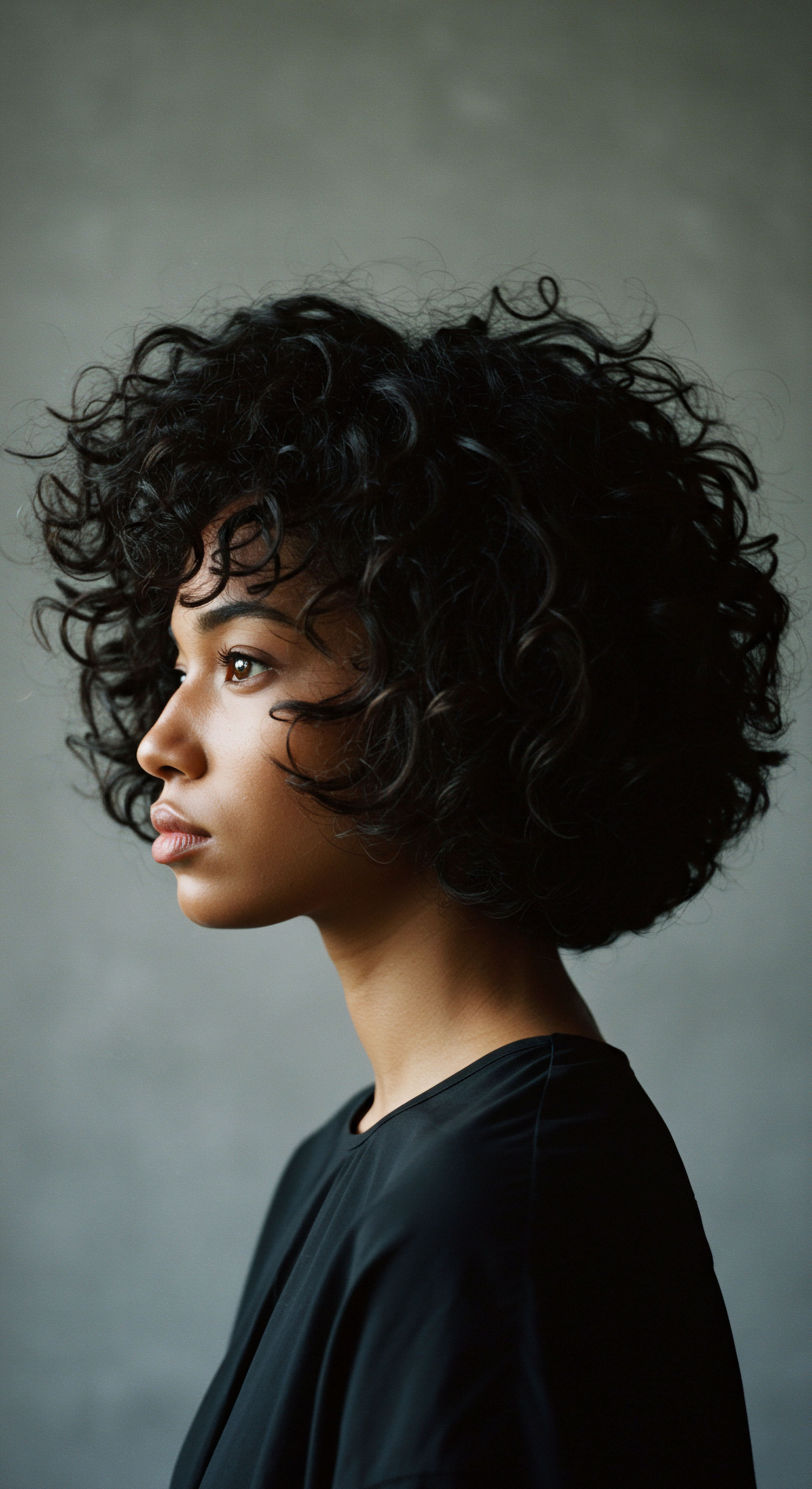
Roots
The dry air of ancient Kemet, a land cradled by the life-giving Nile, shaped more than just the contours of its deserts and monuments; it profoundly influenced the daily lives of its people, down to the very strands upon their heads. One might consider the persistent glare of the sun, the fine dust carried on the wind, and the intimate challenge of maintaining personal well-being in such a climate. For the ancient Egyptians, hair, whether natural or artfully augmented, was never merely an aesthetic choice. It held a deep practical resonance, speaking to comfort, cleanliness, and protection.
The ubiquitous wig, a symbol so strongly associated with this civilization, arose from a keen awareness of these environmental and physiological realities. It was a thoughtful solution, a testament to human ingenuity in adapting to surroundings while upholding ideals of order and presentation.
From the earliest dynastic periods, as far back as 3400 BCE, evidence suggests widespread adoption of false hairpieces, ranging from simple extensions to elaborate full coverings. This widespread use across various societal strata, though more elaborate for the elite, points to a fundamental need beyond mere adornment. The underlying motivation was a practical one, driven by the intense heat and the constant threat of pests. The sun, a powerful force in Egypt, demanded respect and defense.
A shaved or closely cropped head, while aiding cleanliness, left the scalp vulnerable to direct solar exposure, risking discomfort and potential harm. Here, the wig stepped in, providing a protective layer that shielded the scalp without trapping excessive heat, a design advantage over a simple headscarf due to its mesh-like base.
Ancient Egyptian wigs provided essential protection from the intense sun and offered a practical solution for maintaining hygiene in a challenging climate.
The arid conditions also presented a persistent challenge regarding personal hygiene, particularly the prevalence of head lice. Ancient texts and archaeological findings confirm that Egyptians were acutely aware of such parasitic infestations. Priests, for instance, maintained scrupulous cleanliness, often shaving their entire bodies every other day to uphold ritual purity, a practice documented by the Greek historian Herodotus. For the general populace, removing natural hair, or keeping it extremely short, drastically reduced areas where lice could reside and reproduce.
Wigs, being removable, allowed for easy cleaning and fumigation, offering a distinct advantage over natural hair in managing these common pests. This aspect of cleanliness was not just about comfort; it was deeply connected to notions of health and well-being, which were highly valued in Egyptian society.
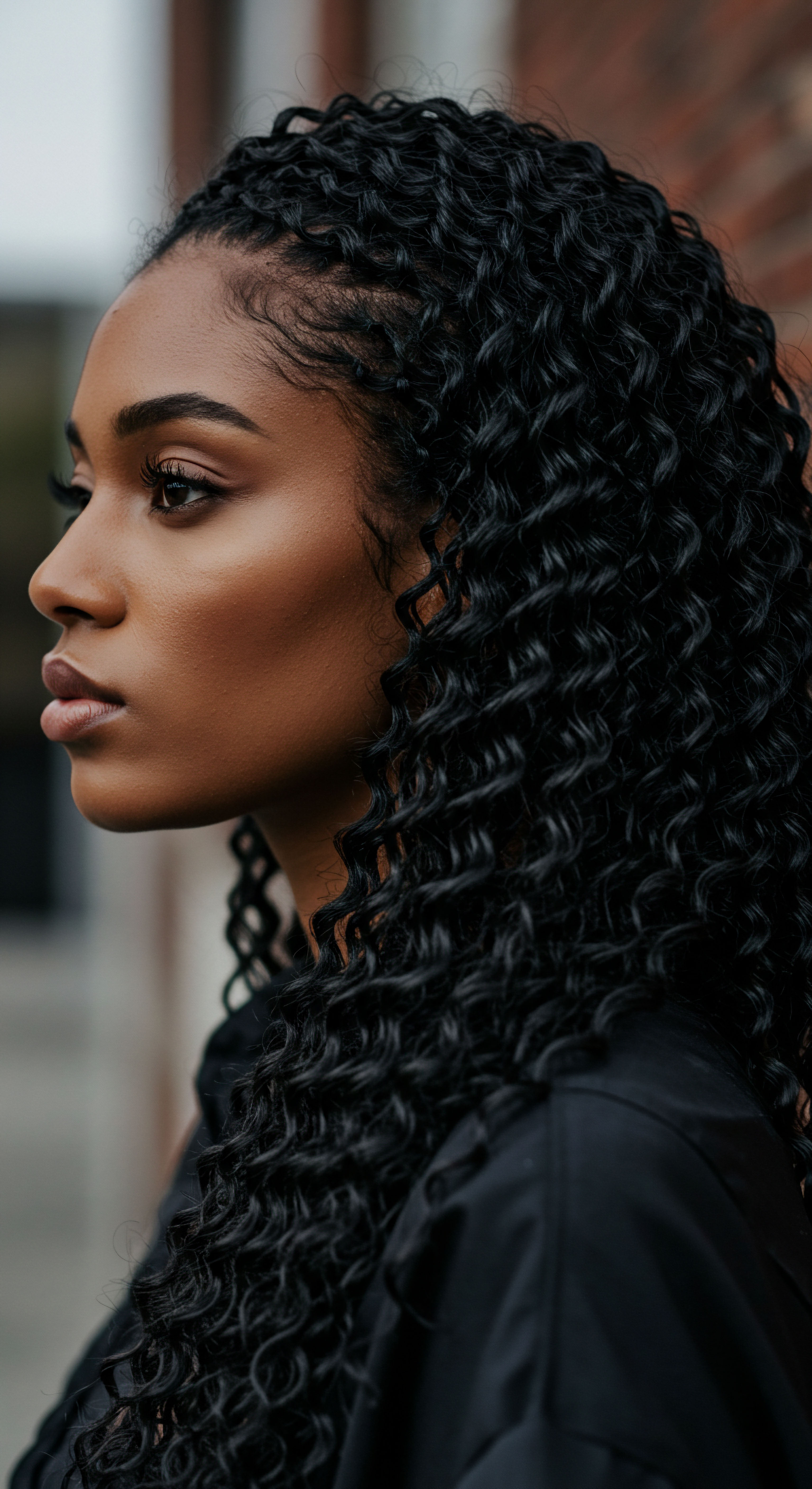
Daily Hair Management
The management of natural hair in ancient Egypt presented its own set of challenges. Long, dense hair, while perhaps desired for aesthetic reasons, could be cumbersome in the hot climate and difficult to keep free from dust and insects. Archaeological discoveries of combs, hairpins, and various unguents speak to a society that dedicated considerable effort to hair care. Yet, despite these efforts, the constant battle against environmental factors and pests made maintaining natural hair a labor-intensive task.
The adoption of wigs simplified daily hair management significantly. Instead of spending hours on intricate natural hairstyles that might quickly become disheveled or infested, individuals could simply don a pre-styled wig. This provided an instant, polished appearance that was also far more hygienic.
Wigs could be cleaned, aired, and treated separately, allowing for a level of cleanliness that would be difficult to achieve with natural hair in the conditions of the time. This practicality extended to all members of society, though the quality and materials of the wigs varied greatly with social standing.
- Hygiene ❉ Wigs offered a readily removable solution for preventing and managing head lice infestations, a persistent concern in ancient Egypt.
- Protection ❉ They shielded the scalp from the intense desert sun, preventing sunburn and heat discomfort for shaved or closely cropped heads.
- Comfort ❉ The mesh-like bases of many wigs allowed for air circulation, providing a cooler alternative to thick natural hair or heavy head coverings.
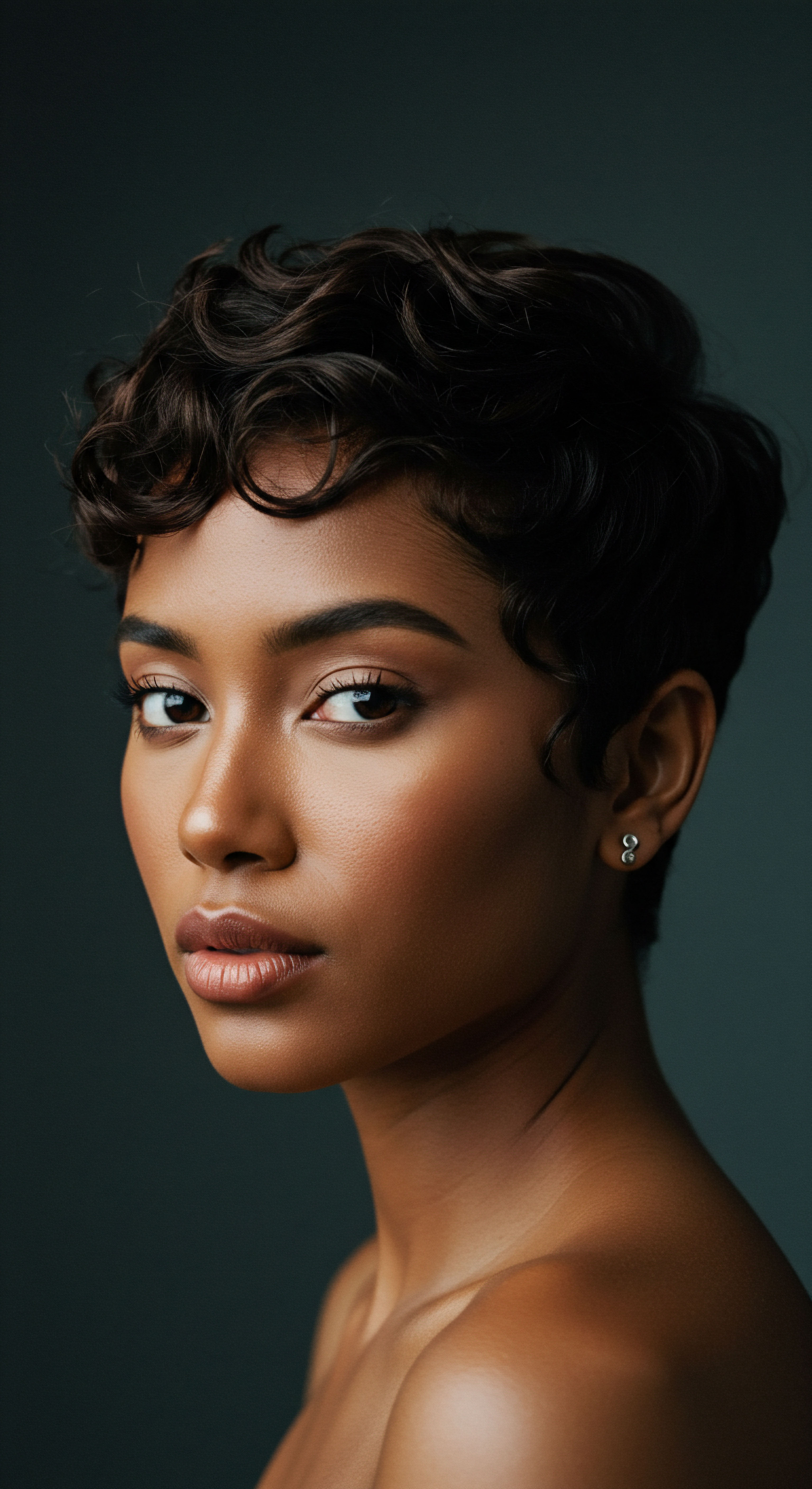
Wig Materials and Craftsmanship
The materials used in ancient Egyptian wig construction varied, reflecting both availability and the wearer’s economic standing. The most prized and expensive wigs were crafted from human hair, meticulously prepared and styled. However, plant fibers, sheep’s wool, and even horsehair were also utilized, particularly for less affluent individuals or for specific stylistic effects.
Wigmakers were skilled artisans, often employing sophisticated techniques that would impress even modern practitioners. Human hair was often braided into hundreds of small plaits, then attached to a mesh cap, sometimes made of finely plaited hair itself. Beeswax and resin mixtures were used as setting lotions, hardening upon cooling to hold styles firmly in place, even in the Egyptian heat.
This level of craftsmanship meant that even wigs made from less costly materials could still offer the practical benefits of hygiene and protection, while providing a presentable appearance. The value placed on these creations is evident in ancient accounts, where hair was listed alongside precious commodities like gold and incense.
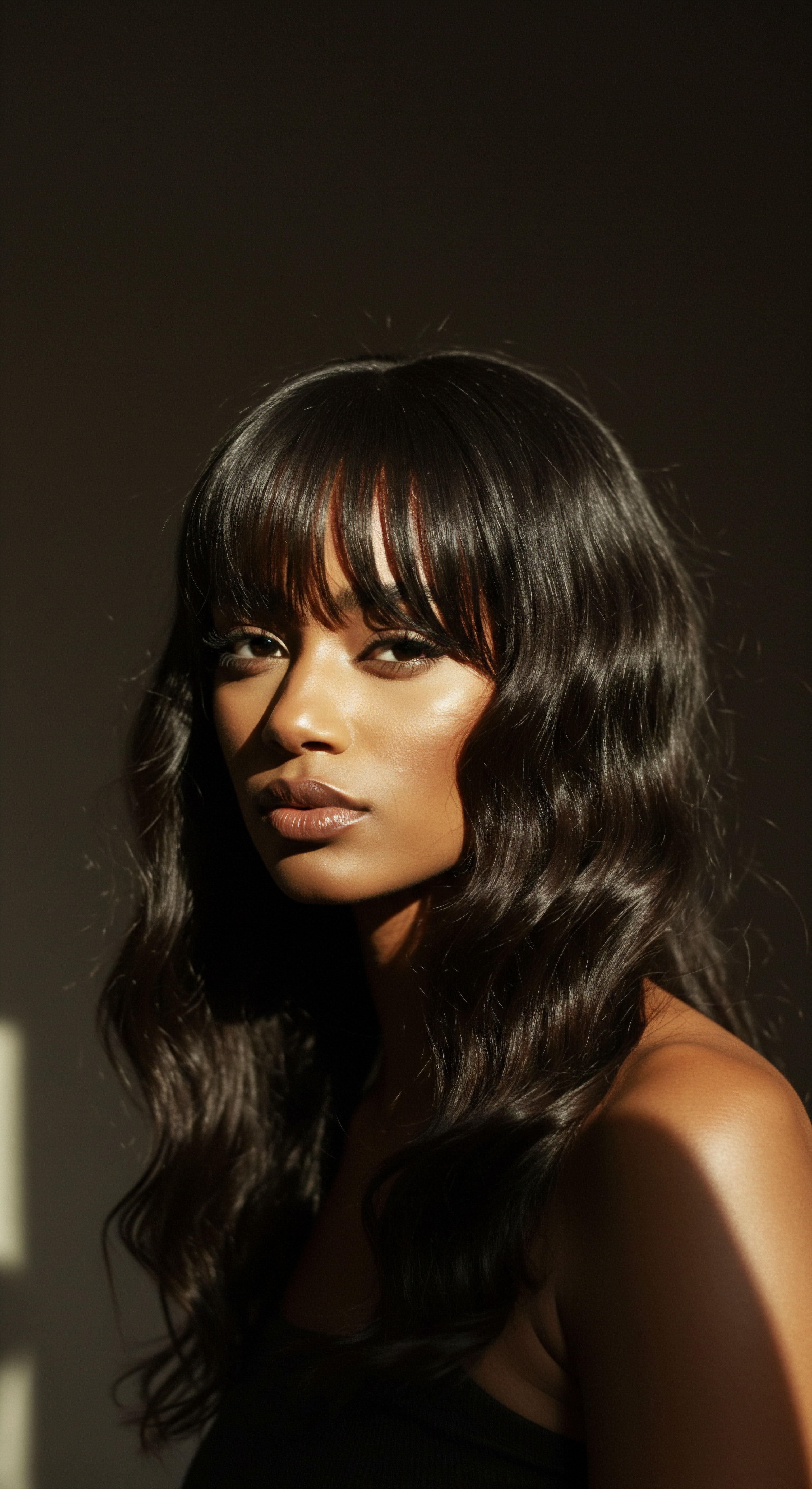
Ritual
Moving from the foundational needs addressed by ancient Egyptian wigs, we now consider how these hairpieces became woven into the fabric of daily life, transforming from mere protective coverings into integral components of personal presentation and societal interaction. The selection and wearing of a wig became a quiet ritual, a deliberate act of preparing oneself for the world, much like choosing a garment or applying kohl to the eyes. This was a pragmatic choice, certainly, but one imbued with a deeper understanding of appearance as a reflection of order and status. The daily application of wigs allowed for consistent, polished appearances that would be difficult to maintain with natural hair in the demanding Egyptian climate.
For many ancient Egyptians, particularly those of higher social standing, the daily routine involved shaving or closely cropping their natural hair. This was not a stylistic whim, but a practical measure to mitigate issues such as lice infestations and to manage heat. Upon this prepared scalp, a wig would be placed.
This practice streamlined personal grooming, allowing for an immediate transformation into a desired aesthetic without the daily struggle of styling natural hair, which could be prone to tangling, dust accumulation, or pest issues. The wig offered a controlled environment for hair, easily cleaned and re-styled by specialized artisans.

Did Wigs Improve Personal Hygiene?
One of the primary practical benefits of wigs, especially for a civilization living in a hot, arid climate, was the significant improvement in personal hygiene. Lice were a constant threat, and the ability to remove one’s hairpiece for cleaning and fumigation provided a direct defense against these pervasive pests. This contrasts sharply with the challenges of keeping natural hair entirely free from infestations. A shaved head, protected by a removable wig, offered a cleaner alternative.
Beyond lice control, wigs facilitated overall cleanliness. The natural scalp, when shaved or closely cut, could be regularly washed and treated with oils and unguents without the impediment of long hair. This regular cleansing of the scalp would have been vital in preventing skin irritations and infections in a dusty environment.
The wig itself, made of human hair or plant fibers, could be aired out, beaten, and potentially treated with aromatic substances to keep it fresh. This systematic approach to hair and scalp maintenance contributed to a higher standard of personal cleanliness for those who wore wigs.
Wigs were a practical tool for hygiene, enabling regular scalp cleansing and simplifying pest management, a vital aspect of daily Egyptian well-being.
Historical accounts, such as those from Herodotus, describe Egyptian priests shaving their entire bodies every other day to maintain ritual purity and avoid lice. This extreme measure highlights the importance placed on cleanliness. For the wider populace, wigs provided a more accessible method to uphold similar standards, especially for the head. The materials used in wig construction, like human hair or plant fibers, could be treated with oils and fats, which not only styled them but also acted as a barrier against dust and dryness, further contributing to a sense of order and cleanliness.

How Did Wigs Offer Sun Protection?
The relentless Egyptian sun presented a serious challenge to skin health, particularly for the scalp. A shaved or very short haircut, while aiding in heat management and hygiene, left the scalp exposed to direct, intense solar radiation. Wigs provided a tangible layer of defense against this environmental aggressor. The density and construction of the wig, often with a mesh-like foundation, created a barrier that diffused the sun’s rays, preventing sunburn and minimizing heat absorption directly onto the scalp.
Unlike heavy fabric head coverings that might trap heat, the structure of ancient Egyptian wigs allowed for some air circulation. The practice of shaving the head beneath the wig would also contribute to a cooler sensation, as the scalp itself was free from the insulating effect of natural hair. This ingenious combination of a shaven head and a permeable wig offered a pragmatic solution to the challenge of staying cool and protected under the desert sun. This dual benefit of sun protection and relative coolness was a significant daily advantage, making outdoor life and labor more tolerable.
The design variations of wigs, from shorter, lighter styles to more voluminous ones, might have also been adapted for different activities or seasons, reflecting a sophisticated understanding of their functional properties. For instance, while elaborate, heavy wigs might have been worn for formal occasions, lighter, perhaps less dense versions could have been favored for everyday tasks or during warmer periods.
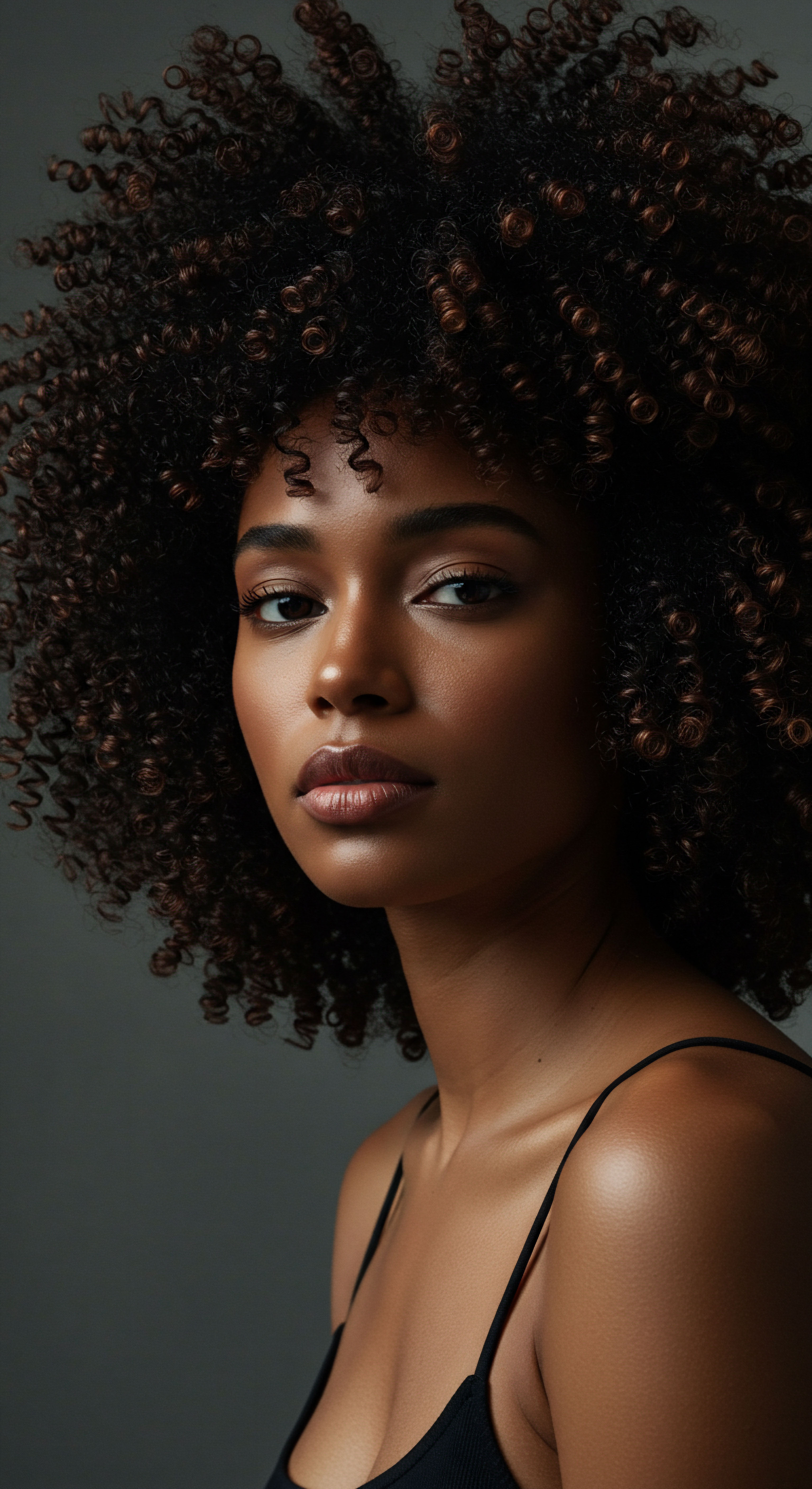
Relay
To consider the ancient Egyptian wig merely as a hygienic accessory or a sun shield would overlook its profound cultural and social resonance, a complex interplay of practicality, identity, and power. The wig was not a static object but a dynamic expression, reflecting the wearer’s standing, their connection to broader societal norms, and even their aspirations. Its daily presence on the heads of the elite, and its aspiration among others, points to a deeper system of meaning, one where personal presentation was inextricably linked to social order and collective well-being. This extends beyond simple aesthetics, delving into the subtle psychological effects and the societal structures that underpinned its use.
The social dimension of wig wearing in ancient Egypt cannot be overstated. While wigs offered tangible benefits in terms of cleanliness and climate control, their cost and the skill required for their creation meant that full, elaborate wigs were largely reserved for the elite. This created a visible marker of status. Art historian Gay Robins notes that tomb chapels from between 1480 and 1350 BCE often depicted stratification by gender, status, and age through hairstyles.
Elite men, for example, wore wigs above shoulder level, with the most distinguished styles featuring intricate curls or braids. The very act of wearing a wig made of human hair, often acquired through trade, signified the power to command resources and the labor of others. This distinction was so pronounced that even within families, the hairstyles depicted for sons of elite men were often shorter or shaven, indicating their junior status.
Beyond practical benefits, ancient Egyptian wigs served as powerful visual cues for social status, identity, and ritual purity, deeply integrated into daily life.
The practical benefit of displaying social standing through wigs extended to reinforcing the hierarchical structure of Egyptian society. A glance at a person’s headwear could immediately convey their position, facilitating social interactions and maintaining order. This visual shorthand was a silent, yet potent, form of communication in a highly structured society.

How Did Wigs Display Social Standing?
The type, size, and material of a wig were direct indicators of an individual’s place within the social hierarchy. Human hair wigs were the most expensive, signifying wealth and prestige. Those with fewer resources might opt for wigs made of plant fibers or wool, or simply keep their natural hair short or shaven. This visual differentiation was a constant, public display of one’s standing.
Consider the elaborate “duplex” styles worn by male officials during the 14th century BC, with their distinct sections of curls and plaits. Such complex styles would have required significant time and skill to produce and maintain, further reinforcing the wearer’s access to skilled artisans and leisure time. This level of visible investment in personal presentation communicated not only wealth but also influence and connection to the highest echelons of society.
| Social Class Elite |
| Typical Wig Materials Human hair, black sheep wool |
| Stylistic Complexity Elaborate, multi-layered, intricate plaits and curls |
| Social Class Middle Class |
| Typical Wig Materials Blended human hair and plant fibers/wool |
| Stylistic Complexity Moderate complexity, often shorter styles |
| Social Class Working Class |
| Typical Wig Materials Plant fibers, natural hair (short/shaven) |
| Stylistic Complexity Simple, minimal, or no wig use |
| Social Class Wig type and complexity directly reflected social standing in ancient Egypt. |
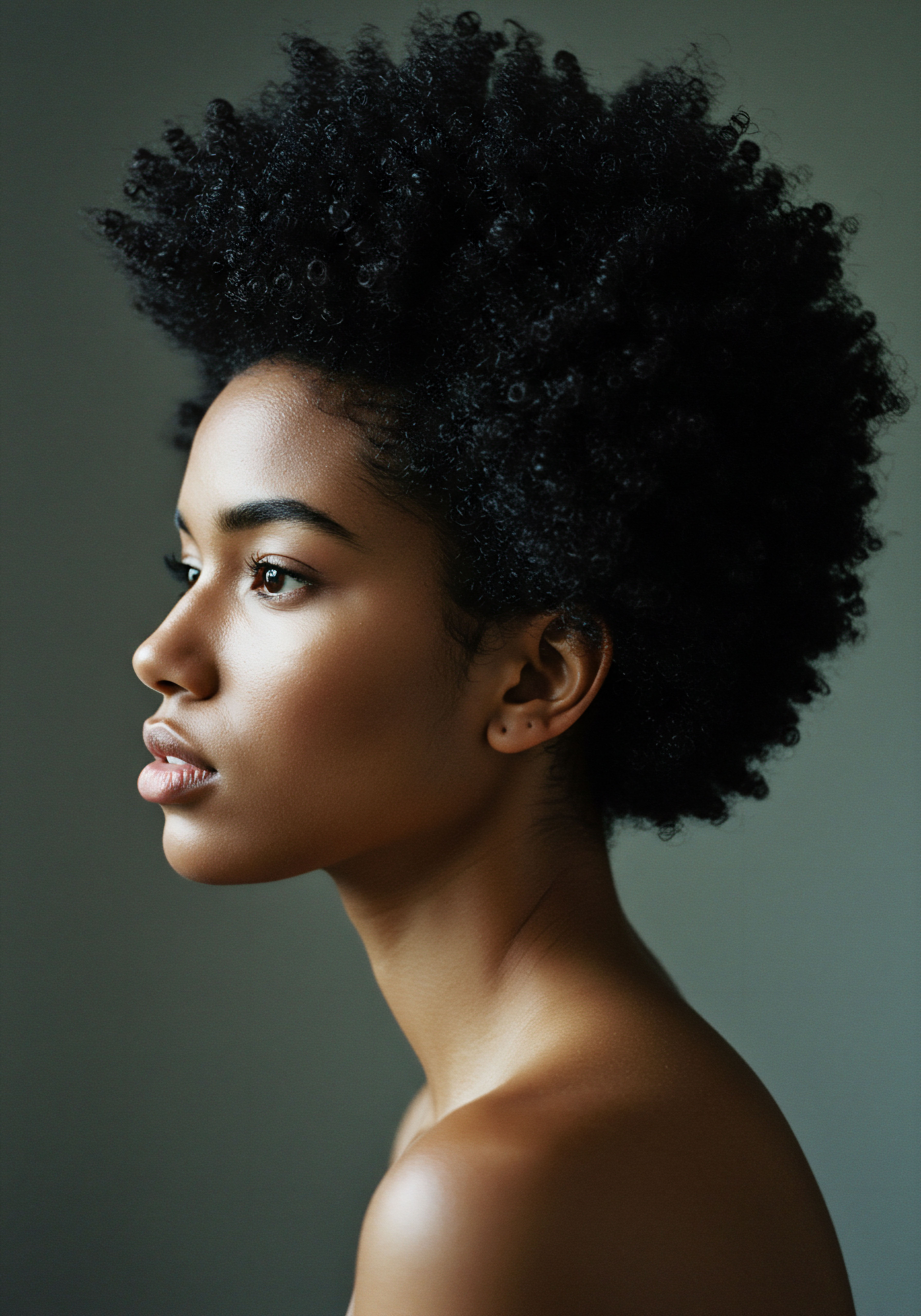
Did Wigs Reflect Ritual Purity?
For certain segments of Egyptian society, particularly the priesthood, wigs were deeply tied to concepts of ritual purity. Priests were required to shave their entire bodies, including their heads, to ensure absolute cleanliness before performing religious duties. This practice minimized the risk of parasitic infestation, which would compromise their sacred roles. The wig, in this context, served as a clean, symbolic covering over a purified head, allowing them to maintain a dignified appearance while adhering to strict religious tenets.
This connection between shaved heads and ritual purity was not unique to priests; it permeated other aspects of society where cleanliness was paramount. The removal of natural hair, and its replacement with a wig, could be seen as an act of purification, a symbolic shedding of the unkempt or potentially unclean. This aspect of wig use transcends mere fashion, positioning it as a tool for spiritual and ceremonial readiness.
A striking example of this connection to ritual purity, and indeed, a less commonly discussed aspect of ancient Egyptian hair practices, comes from the analysis of mummified remains. Research by Joann Fletcher, an Egyptologist at the University of York, has revealed intriguing details about hair and scalp conditions. In one particular instance, a paleoparasitological study on ancient Egyptian mummies, including a specimen from Abydos dating to around 3000 BC, documented the presence of head lice (Pediculus humanus capitis). This finding underscores the persistent challenge of such infestations.
The systematic removal of natural hair, as practiced by priests and many members of the elite, followed by the wearing of a wig, served as a highly effective method to counteract this pervasive issue, thus upholding the strict cleanliness standards deemed necessary for both daily living and ritualistic duties. This direct evidence from ancient remains provides a tangible, almost visceral, understanding of the practical imperative behind wig adoption for purity.
- Priestly Requirements ❉ Priests shaved their heads for cleanliness, and wigs maintained their dignified appearance during religious duties.
- Symbolic Cleanliness ❉ The act of wearing a wig over a shaved head could symbolize a purified state, suitable for social and ritual engagement.
- Practical Pest Control ❉ Removing natural hair drastically reduced areas for lice, making wigs a hygienic choice.

Psychological Impact and Identity
Beyond the practical and social, wigs held a subtle psychological sway. Hair, across cultures and throughout history, is often linked to identity, vitality, and personal expression. For ancient Egyptians, who often shaved their heads, the wig allowed them to project an idealized self, a perfected image that might transcend the realities of natural hair growth or loss.
Consider the impact on individuals experiencing natural hair loss due to age or illness. Wigs offered a means to conceal such conditions, allowing individuals to maintain a youthful or vigorous appearance, thereby preserving their social standing and self-perception. This ability to control one’s outward presentation, to consistently present an ordered and ideal image, would have contributed to a sense of confidence and composure in daily interactions.
The wig became a second skin, a deliberate construction of identity that aligned with societal expectations of beauty and order. This control over one’s appearance provided a measure of psychological comfort and assurance in a world where public perception carried significant weight.
The meticulous styling of wigs, whether with tight curls, long plaits, or elaborate layers, allowed for diverse expressions of personal taste within established norms. This creative outlet, even within the confines of a prescribed accessory, allowed individuals to express a facet of their identity, contributing to a sense of self and belonging within their community. The psychological benefit of this self-expression, of presenting a curated image to the world, was a practical advantage for mental well-being in a society that valued appearance.

Reflection
The ancient Egyptian wig, far from being a mere relic of fashion, stands as a testament to human ingenuity and adaptability. Its story speaks not only of practical solutions to environmental challenges but also of the profound ways in which personal adornment intersects with social structure, ritual practice, and individual identity. From shielding delicate scalps under a searing sun to serving as a bulwark against pervasive pests, these meticulously crafted hairpieces provided tangible daily benefits.
Yet, their purpose extended beyond the purely utilitarian, acting as silent declarations of status, cleanliness, and even inner composure. They remind us that the choices we make about our hair, even today, often carry echoes of these ancient considerations—a desire for comfort, for health, for belonging, and for the quiet strength that comes from presenting our authentic, or perhaps idealized, selves to the world.

References
- Fletcher, J. (1995). Ancient Egyptian Hair and Wigs. British Museum Press.
- Fletcher, J. (1998). Hair ❉ Its Structure and Role in the Ancient World. Oxford University Press.
- Fletcher, J. & Salamone, F. (2016). An Ancient Egyptian Wig ❉ Construction and Reconstruction. Internet Archaeology, 42.
- Robins, G. (2020). Hair, Gender, and Social Status in Ancient Egypt. JSTOR Daily.
- Cox, J. (1977). Wigs and Hairdressing in Ancient Egypt. Kegan Paul.
- Herodotus. (Fifth Century BCE). The Histories. (Various translations available).
- Lichtheim, M. (1976). Ancient Egyptian Literature ❉ A Book of Readings, Vol. II ❉ The New Kingdom. University of California Press.
- Manniche, L. (1987). Sexual Life in Ancient Egypt. Kegan Paul International.
- Strouhal, E. (1992). Life of the Ancient Egyptians. University of Oklahoma Press.
- Riefstahl, E. (1952). Patterned Textiles in Ancient Egypt. Brooklyn Museum.
- Fletcher, J. (2002). Ancient Egyptian Hair and Wigs. In A. P. C. J. B. (Ed.), Ancient Egyptian Materials and Technology (pp. 495-502). Cambridge University Press.
- Buckley, S. & Fletcher, J. (2016). Hair and Scalp Conditions in Ancient Egypt. Internet Archaeology, 42.